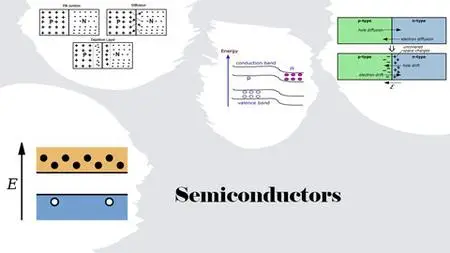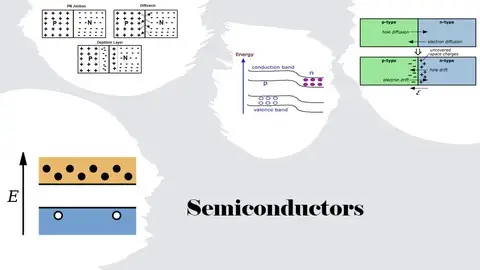Semiconductors & Its Application In Analog Electronics
Last updated 8/2022
MP4 | Video: h264, 1280x720 | Audio: AAC, 44.1 KHz
Language: English | Size: 2.74 GB | Duration: 6h 25m
Last updated 8/2022
MP4 | Video: h264, 1280x720 | Audio: AAC, 44.1 KHz
Language: English | Size: 2.74 GB | Duration: 6h 25m
Semiconductors & it's Real World Application in Electronics, Electrical & Instrumentation Engineering
What you'll learn
All the basic concepts of semiconductors
Semiconductors will help them to understand how electronic devices like diodes, transistors, etc work
Concept of Energy, Valence and Conduction band diagrams
Understand the internal structure of diodes
Intrinsic and extrinsic semiconductors
Clears the basic concepts of electronic devices (EDC)
Requirements
Should have basic idea about conductors or you can watch my course-1 which deals with conductors.
Basic idea of chemistry like atoms, shell, sub-shell, electrons, etc.
Description
Before enrolling in the course I expect that you must be having a good idea about current electricity, chemistry and some knowledge about conductors. If you don't have any idea about it then you can enroll in rest of my courses which deals with all these concepts in depth.In this course, you will learn all the things about semiconductors from scratch. Below I had listed certain topics this would be our roadmap. There would also be certain topics that I'm not giving in this particular roadmap but its concept would be required to proceed further. So I had also explained that part.@ Roadmap:-Introduction to semiconductorsDifference between conductors, semiconductors, and an insulatorsEnergy band diagram for sodium and silicon atomsValence band and Conduction band diagram for sodium and silicon atomsForbidden Energy GapIntrinsic and Extrinsic SemiconductorsInternal structure or internal working of the p-n junction diode (Application part)So this was all about the course.@ Outcome of the course:-As you all know that I'm making series on electronics, this is a course-2 and this course is a prerequisite to the next course where we will be dealing with diode circuits, Bjt and Fet's circuits, etc. So to understand the core electronics part or how any electronic device behaves, you should be very much well acquainted with the part of the semiconductor.For those who want to perceive their future in the VLSI domain, this course is purely meant for them.And there are many more advantages which I'm not revealing here, you yourself will get to know what knowledge you have acquired after completing this course.
Overview
Section 1: Introduction
Lecture 1 Introduction
Lecture 2 Brief Introduction
Section 2: Introduction to semiconductors
Lecture 3 Introduction to the basics of semiconductors
Section 3: Semiconductors, Conductors and Insulators
Lecture 4 Difference between Conductors, Insulators and an Insulators w.r.t conductivity
Section 4: Energy Band
Lecture 5 Bohr's Law
Lecture 6 Energy band diagram for single atom placed in a crystal
Lecture 7 Concept of shell and sub-shells in an atom
Lecture 8 Energy Band diagram of 'N' Sodium atoms present in the sodium crystal
Section 5: Concept of Valence Band & Conduction Band & Energy Band of Silicon
Lecture 9 Brief introduction to valence and conduction band of sodium atom
Lecture 10 Energy band diagram of silicon (part-1)
Lecture 11 Energy band diagram of silicon (part-2)
Lecture 12 Modified Definition of Valence and Conduction Band
Lecture 13 Difference between Conductors, Semiconductors, Insulators w.r.t of Energy Band
Section 6: Intrinsic Semiconductors
Lecture 14 Introduction to Intrinsic Semiconductors
Lecture 15 Concept of electrons and holes
Lecture 16 Formation of current and energy band diagram of intrinsic semiconductors
Section 7: Extrinsic Semiconductors
Lecture 17 Introduction to extrinsic semiconductors
Lecture 18 Types of extrinsic semiconductors
Lecture 19 N-type extrinsic semiconductor
Lecture 20 P-type extrinsic semiconductors
Section 8: P-N Junction Diode
Lecture 21 Internal structure and working of pn junction diode
Lecture 22 Simulation of basic diode circuit on the thinkercad software
Anyone who wants to learn semiconductors in depth,Beginner who wants to start his/her career in electronics,Beginner who wants to perceive his career in VLSI domain



